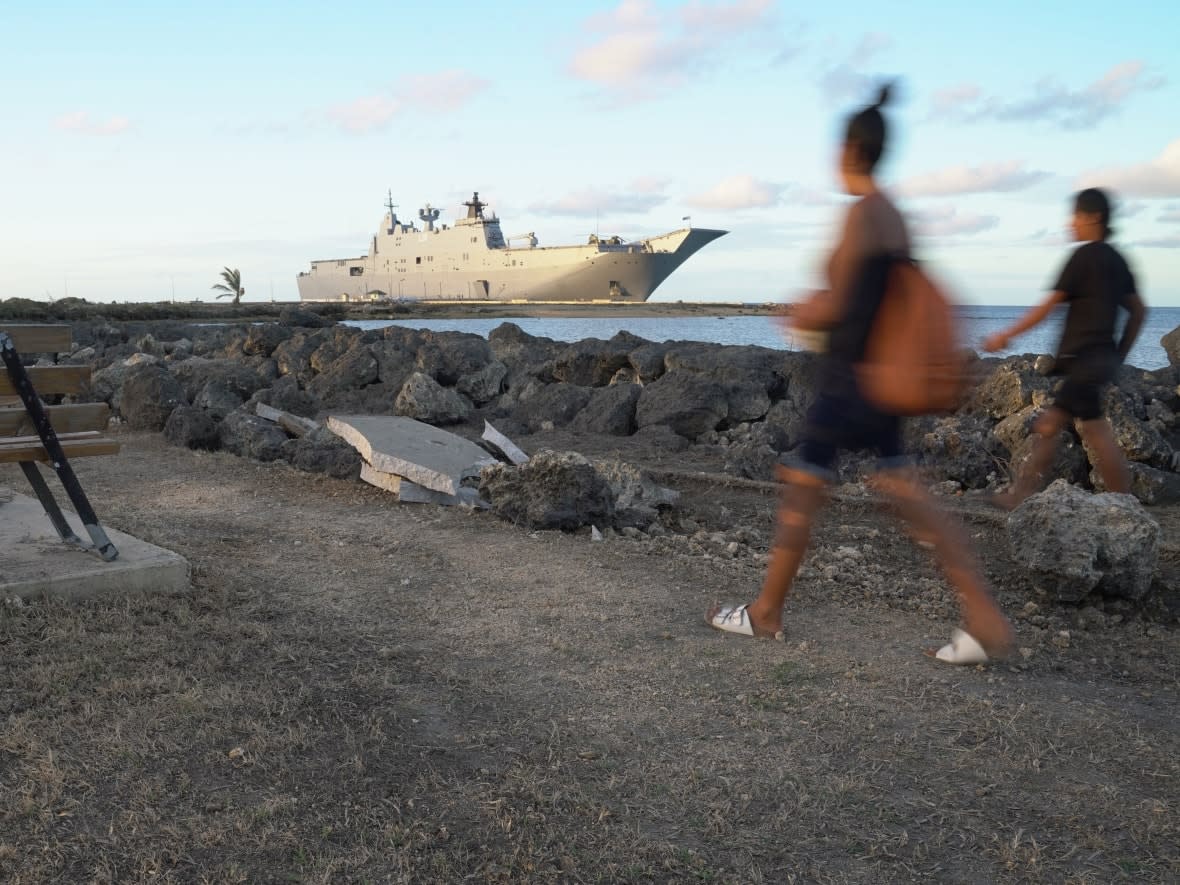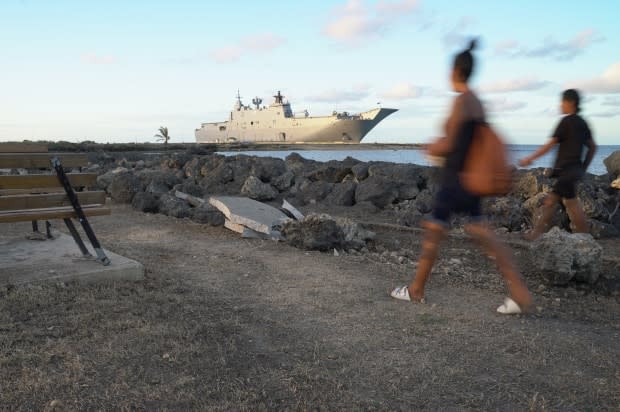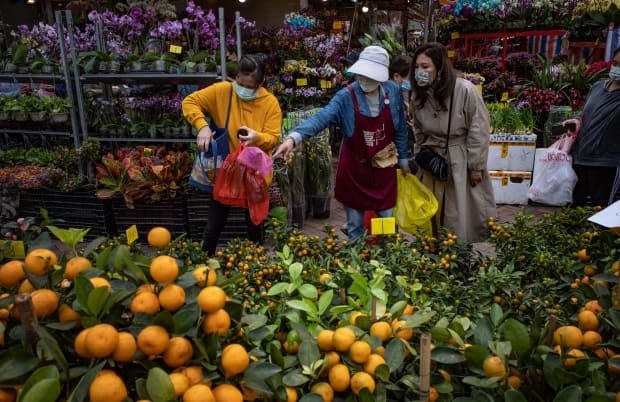Coronavirus: What's happening in Canada and around the world on Jan. 26

The latest:
Prince Edward Island will ease some COVID-19 restrictions as students return to classrooms next week, which will see Ontario and Quebec also relaxing public health rules amid a fifth wave fuelled by the Omicron variant.
In a COVID-19 briefing Wednesday, P.E.I. Premier Dennis King confirmed in-person learning would resume on Monday as planned, saying that students being out of of school for well over a month has "brought its own challenges."
"Our teachers, our school administrators, our parents have been champions through this, our kids have been champions through this, but it's time and we need to get them back into school," he said.
Students will be subject to testing, masking and cohorting.
WATCH | New vaccine guidance for kids:
The government is also loosening other pandemic measures on Monday, including permitting personal gatherings with a steady, consistent maximum of 10 people and allowing fitness facilities and indoor dining to reopen at 50 per cent capacity.
The province on Wednesday reported 14 COVID-19 hospitalizations, with two people in ICU. There were 255 new lab-confirmed cases. Chief Public Health Officer Dr. Heather Morrison said she expects more cases when students return to school on Monday.
"It's always a balance going forward," she said. "It was never intended to stop Omicron, the circuit breaker … It was to suppress the cases and make sure the hospital could manage the capacity and so we could open up a little bit more."
In Quebec, restaurants will also be permitted to open dining rooms with limited capacity on Monday, while some sports will return. The moves are part of a gradual easing of restrictions the province is planning for the weeks ahead.
"The idea is to go gradually," Legault said in describing the loosened restrictions at a press conference Tuesday. "I understand that people are fed up, but we need to take a prudent approach."
Legault said Quebec's health system is still feeling the strain and that it will take time to build the capacity the province needs.
WATCH | Issues in Quebec's health-care system:
The province on Wednesday reported 3,270 COVID-19 hospitalizations, with 252 people in intensive care. There were 73 additional deaths and 4,150 new lab-confirmed cases.
Quebec's online portal, where people can report the results of rapid tests done at home, is now online. Health Minister Christian Dube said the portal will help gauge community transmission because lab tests remain limited to high-risk groups, as it does in most jurisdictions across the country.
Meanwhile, Ontario is allowing a host of indoor settings to reopen to the public with 50 per cent capacity limits on Monday, including restaurants, gyms and movie theatres.
The province lay out a timeline for gradually easing public health restrictions last week, with a plan to lift most remaining measures by mid-March.
Ontario's health minister on Wednesday reported a total of 4,016 hospitalizations, with 608 people in intensive care. The province, which saw 5,368 new lab-confirmed cases, also reported 89 additional deaths — though Christine Elliott's office noted that the deaths occurred over the past 21 days.
— From CBC News and The Canadian Press, last updated at 7:30 p.m. ET
What's happening across Canada
With lab-based testing capacity deeply strained and increasingly restricted, experts say true case counts are likely far higher than reported. Hospitalization data at the regional level is also evolving, with several provinces saying they will report figures that separate the number of people in hospital because of COVID-19 from those in hospital for another medical issue who also test positive for COVID-19.
For more information on what is happening in your community — including details on outbreaks, testing capacity and local restrictions — click through to the regional coverage below.
You can also read more from the Public Health Agency of Canada, which provides a detailed look at every region — including seven-day average test positivity rates — in its daily epidemiological updates.
In the rest of Atlantic Canada on Wednesday, Nova Scotia health officials said the province had 91 people in designated COVID-19 hospital units, including 15 people in intensive care. The province also reported three additional deaths and 346 new lab-confirmed cases of COVID-19.
Dr. Janice Fitzgerald, the chief medical officer of health in Newfoundland and Labrador, said that there were 20 people hospitalized due to COVID-19. Of those, seven are in ICU, an increase of two from the previous day. The province also reported three deaths due to COVID-19 and 304 additional lab-confirmed cases.
The update came as Premier Andrew Furey said the province is, "evaluating making a change to the Newfoundland and Labrador vaccine pass to reflect booster doses in the coming weeks."
New Brunswick reported that 137 people were hospitalized with COVID-19, including eight people in intensive care. Six new deaths were also reported, along with 520 new cases.
The update came a day after the province said that four hospitals were at or near capacity, with the Horizon Health hospital network saying that number of people in hospital combined with staff shortages is having an impact on how it delivers care.
Across the North, Nunavut on Wednesday reported 48 new cases of COVID-19, while Yukon reported 25 additional cases and the Northwest Territories reported 175 new cases.
In the Prairie provinces, Manitoba on Wednesday reported a total of 720 COVID-19 hospitalizations — down from the previous day's pandemic high of 729. Of those, 49 people were in intensive care. Health officials also reported three new deaths and 637 additional lab-confirmed cases.
In Saskatchewan, the total number of COVID-19 hospitalizations stood at 315 on Wednesday, with 33 people in the province's intensive care units. The province also reported six additional deaths and 1,194 lab-confirmed cases.
Alberta on Wednesday reported 1,418 COVID-19 hospitalizations, with 109 people in ICU. There were 22 new deaths and 3,483 new lab-confirmed cases.
In British Columbia, total COVID-19 hospitalizations stood at 949, health officials said Wednesday, with 136 in intensive care units. The province also reported 21 additional deaths and 2,086 additional lab-confirmed cases.
— From CBC News and The Canadian Press, last updated at 7:30 p.m. ET
What's happening around the world

As of Wednesday evening, more than 361.4 million cases of COVID-19 had been reported worldwide, according to Johns Hopkins University's coronavirus tracker. The reported global death toll stood at more than 5.6 million.
In the Asia-Pacific region, the Australian navy's largest ship docked at disaster-stricken Tonga on Wednesday and was allowed to unload humanitarian supplies in the South Pacific nation despite crew members being infected with COVID-19, officials said.
Nearly two-dozen sailors aboard HMAS Adelaide were reported infected on Tuesday, raising fears the mission could bring the coronavirus to the small archipelago devastated by an undersea volcanic eruption and a tsunami on Jan. 15. Supplies were to be delivered without contact with the local population to avoid infections, the Australian government said in a statement.
Since the pandemic began, Tonga has reported just a single case of COVID-19 and has avoided any outbreaks. It's one of the few countries in the world currently completely virus free. About 61 per cent of Tongans are fully vaccinated, according to Our World in Data.
South Korea's daily new cases exceeded 13,000 for the first time, as the government seeks to revise its anti-virus response scheme to focus on Omicron.

In Europe, most coronavirus restrictions including mandatory face masks were being lifted in England on Thursday, after the government said its vaccine booster rollout successfully reduced serious illness and COVID-19 hospitalizations.
Face coverings are no longer required by law anywhere in England, and a legal requirement for COVID-19 passes — for entry into nightclubs and other large venues — has been scrapped.
Hospital admissions and the number of people in intensive care units have stabilized or fallen, and daily cases have fallen from a peak of over 200,000 a day around New Year to under 100,000 in recent days.
Austria's lockdown for people not fully vaccinated will end on Monday because the pressure on hospitals has eased, the government said.
Sweden will extend several restrictions for another two weeks, while neighbouring Denmark was expected to announce that it no longer considers COVID-19 as "a socially critical disease" as of next month and will remove most restrictions.
Romania on Wednesday recorded a huge jump in COVID-19 infections, hitting a pandemic high of nearly 35,000 daily cases, almost doubling the numbers from a day earlier. Deaths have also begun to climb.
Russia, meanwhile, has expanded a domestically developed coronavirus vaccine for children aged 12-17 to include more regions, amid the country's biggest infection surge yet due to the spread of the highly contagious Omicron variant.
In Africa, Uganda wants to curb its borrowing and boost exports in sectors such as meat and dairy as the East African country lifts restrictions triggered by the pandemic, President Yoweri Museveni and government officials told Reuters.
LISTEN | What can Canada learn from South Africa:
In the Middle East, Israel broadened eligibility for a fourth dose of COVID-19 vaccine to include adults under 60 with underlying medical conditions, their caretakers, and others over 18 at significant risk of exposure to the coronavirus.
In the Americas, the United States has shipped 400 million COVID-19 vaccine doses as part of its earlier pledge to donate about 1.2 billion doses to low-income countries, the White House said on Wednesday.
"Today, we will hit a major milestone in our global effort: 400 million vaccine doses shipped to 112 countries ... for free, no strings attached," White House COVID-19 co-ordinator Jeff Zients told reporters at a briefing.
U.S. President Joe Biden's administration had previously said it would donate a second tranche of 500 million doses to the COVAX global vaccine sharing program, raising its total pledge to some 1.2 billion COVID vaccine doses, with the latest batch expected to start shipping this month.
Global health experts have said at least five billion to six billion doses are needed by poorer countries to help protect them against the coronavirus amid the ongoing pandemic.
Overall COVAX, backed by the World Health Organization and the Global Alliance for Vaccines and Immunization, has delivered more than a billion doses to 144 countries and aims to achieve 70 per cent COVID-19 immunization coverage by mid-2022.
— From Reuters, CBC News and The Associated Press, last updated at 7:30 p.m. ET

 Yahoo Movies
Yahoo Movies 
